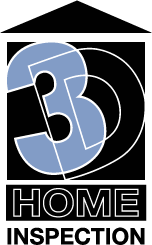A CHECKLIST FOR WINTERIZING YOUR HOME – PART 1
Winter is just around the corner. It’s time to prepare your house for the onset of our northern climate. Here are some tips for winterizing your home before it gets too cold.
General
- Test all exterior GFCI outlets. Check any electrical holiday decorations for fire hazards like frayed wires or loose connections. Don’t overload the outlet, extension cords, or surge protectors. Keep in mind that only a qualified, licensed contractor should make changes to a home’s electrical system.
- Seal/caulk between siding and trim, windows and doors. Seal any utility openings like garden hose faucets, gas pipes and air conditioning lines.
- Clean debris from around the outside of air conditioner compressor. Cover it for winter.
- Check external electrical fixtures for birds nests. Remove them along with any other debris.
- Store firewood at least 30 feet away from the house. Firewood can cause house fires. It also attracts termites.
- Inspect the walls. Look for damaged siding or openings that could allow water to get in.
- Check painting. Deteriorated paint can lead to wood rot.
- Check driveways for deteriorating or cracked surfaces. Cracks can cause safety hazards or further damage. Repair issues and perform any needed maintenance.
- Check trees and bushes. Remove dead sections or branches. Remove tree branches that overhang and touch the roof. Keep branches trimmed to a minimum of 6 inches away from your house.
Gutters and Downspouts
- Clean gutter and downspouts. Repair any that are missing, damaged, or disconnected. By making sure water drains away from your house, you’ll:
> minimize standing water and the freeze/thaw expansion process around the foundation.
> protect your roof against heavy snow, ice loads and ice dams.
Roof
- Inspect for damaged or loose shingles. Look for gaps in the flashing where the roof and siding meet the vents and flues. Call a qualified contractor to make repairs.
Windows and Doors
- Inspect weather stripping for damage and deterioration. Look for missing or loose stripping. This can negatively affect comfort levels and utility bills. Repair or replace any bad sections.
- Remove screens from windows and install storm windows.
- Repair broken windows.
Our next post: Interior winterizing checklist
These home maintenance tips are not intended to be all-inclusive, but rather general guidelines. All tips may not apply to every home. We recommend that inspections, repairs and maintenance beyond the abilities of the homeowner be performed by a qualified, licensed (if applicable) contractor or tradesman specializing in that item or system, and certified in the necessary safety procedures. Carefully follow manufacturer’s instructions.
